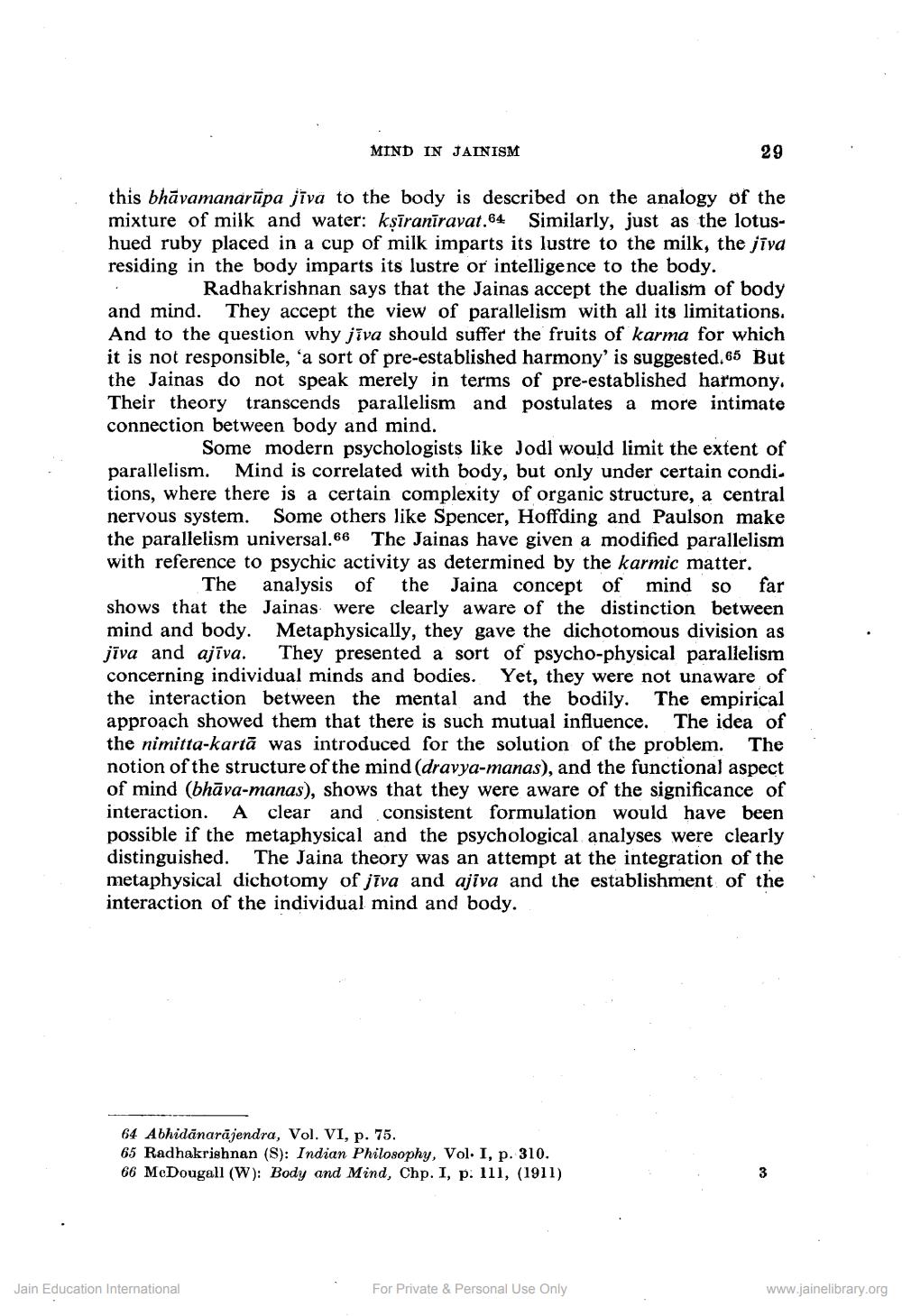________________
MIND IN JAINISM
29
this bhāvamanarūpa jīva to the body is described on the analogy of the mixture of milk and water: ksīranīravat. 64 Similarly, just as the lotushued ruby placed in a cup of milk imparts its lustre to the milk, the jīva residing in the body imparts its lustre or intelligence to the body.
Radhakrishnan says that the Jainas accept the dualism of body and mind. They accept the view of parallelism with all its limitations. And to the question why jīva should suffer the fruits of karma for which it is not responsible, 'a sort of pre-established harmony' is suggested. 65 But the Jainas do not speak merely in terms of pre-established harmony. Their theory transcends parallelism and postulates a more intimate connection between body and mind.
Some modern psychologists like Jodl would limit the extent of parallelism. Mind is correlated with body, but only under certain condi. tions, where there is a certain complexity of organic structure, a central nervous system. Some others like Spencer, Hoffding and Paulson make the parallelism universal.66 The Jainas have given a modified parallelism with reference to psychic activity as determined by the karmic matter.
The analysis of the Jaina concept of mind so far shows that the Jainas were clearly aware of the distinction between mind and body. Metaphysically, they gave the dichotomous division as jīva and ajīva. They presented a sort of psycho-physical parallelism concerning individual minds and bodies. Yet, they were not unaware of the interaction between the mental and the bodily. The empirical approach showed them that there is such mutual influence. The idea of the nimitta-kartā was introduced for the solution of the problem. The notion of the structure of the mind (dravya-manas), and the functional aspect of mind (bhāva-manas), shows that they were aware of the significance of interaction. A clear and consistent formulation would have been possible if the metaphysical and the psychological analyses were clearly distinguished. The Jaina theory was an attempt at the integration of the metaphysical dichotomy of jīva and ajiva and the establishment of the interaction of the individual mind and body.
64 Abhidanarājendra, Vol. VI, p. 75. 65 Radhakrishnan (S): Indian Philosophy, Vol. I, p. 310. 66 McDougall (W): Body and Mind, Chp. I, p. 111, (1911)
Jain Education International
For Private & Personal Use Only
www.jainelibrary.org




